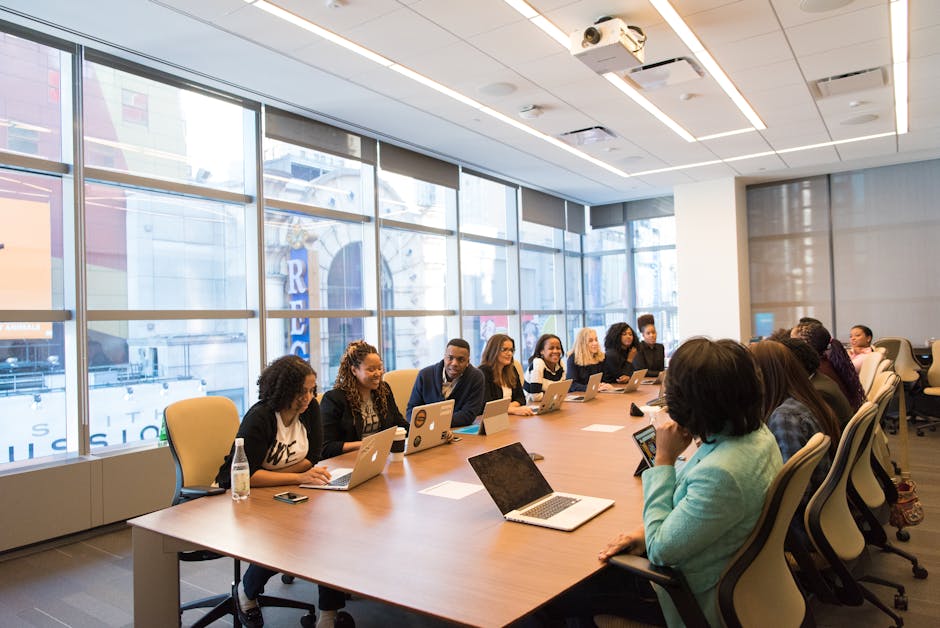Long-Term Social Distancing Strategies for the Modern Office
“As businesses adapt to the post-pandemic world, implementing effective long-term social distancing strategies in the office is crucial. This article explores practical approaches to maintain safe distances, optimize workspace layouts, and foster a culture of health-consciousness among employees. ”

Long-Term Social Distancing Strategies for the Modern Office
In the wake of the global pandemic, businesses are reimagining their workplaces to ensure employee safety while maintaining productivity. Social distancing at work has become a critical component of this new normal, requiring thoughtful planning and implementation of long-term strategies. This article explores effective approaches to social distancing in the office that can be sustained over time.

The Importance of Continued Social Distancing
As we transition into a post-pandemic world, it's crucial to understand why social distancing remains important in the workplace:
- Health and Safety: Maintaining distance reduces the risk of virus transmission among employees.
- Business Continuity: Preventing outbreaks ensures minimal disruption to operations.
- Employee Confidence: A safe environment boosts morale and productivity.
- Legal Compliance: Many regions still require adherence to social distancing guidelines.
Designing a Socially Distanced Office Layout
Creating an office space that naturally encourages social distancing is key to long-term success:
1. Rethink Desk Arrangements
- Increase space between workstations to at least 6 feet.
- Install physical barriers or partitions where necessary.
- Consider a checkerboard seating pattern to maximize distance.
2. Reimagine Common Areas
- Reduce seating capacity in break rooms and lounges.
- Create outdoor spaces for breaks and informal meetings.
- Implement touchless amenities to minimize shared contact points.
3. Optimize Traffic Flow
- Establish one-way traffic patterns in hallways and staircases.
- Use floor markings to indicate safe distances in queuing areas.
- Designate separate entry and exit points to reduce congestion.

Technology-Driven Solutions for Social Distancing
Leveraging technology can help maintain social distancing without compromising collaboration:
- Desk Booking Systems: Implement software that allows employees to reserve desks in advance, ensuring proper spacing.
- Occupancy Monitoring: Use sensors to track real-time occupancy levels in different areas of the office.
- Virtual Meeting Tools: Encourage the use of video conferencing for meetings, even when in the office.
Fostering a Culture of Health Consciousness
To ensure long-term adherence to social distancing, it's essential to cultivate a workplace culture that prioritizes health and safety:
- Regular Communication: Keep employees informed about the importance of social distancing and current guidelines.
- Lead by Example: Ensure management visibly follows and promotes social distancing practices.
- Incentivize Compliance: Consider recognition programs for teams that consistently adhere to safety protocols.
Flexible Work Arrangements
Incorporating flexible work options can significantly aid in maintaining social distancing:
- Hybrid Work Models: Allow a mix of in-office and remote work to reduce office density.
- Staggered Schedules: Implement rotating shifts to limit the number of employees present at any given time.
- Extended Work Hours: Consider longer operating hours to spread out employee presence throughout the day.

Adapting Meeting Spaces for Safety
Conference room setups need to be reimagined to accommodate social distancing:
- Reduce Capacity: Limit the number of chairs in meeting rooms.
- Hybrid Meeting Equipment: Equip rooms with technology to facilitate meetings with both in-person and remote participants.
- Outdoor Meetings: When weather permits, encourage the use of outdoor spaces for small group discussions.
Regular Assessment and Adaptation
The key to long-term success is continuous evaluation and improvement of social distancing strategies:
- Feedback Loops: Regularly solicit employee input on the effectiveness of current measures.
- Data Analysis: Use occupancy data and health metrics to inform decision-making.
- Stay Informed: Keep abreast of the latest health guidelines and best practices in workplace safety.
Conclusion
Implementing long-term social distancing strategies in the office requires a multifaceted approach that combines thoughtful space design, technology integration, and cultural shifts. By prioritizing employee safety and wellbeing, businesses can create a workspace that is not only compliant with health guidelines but also fosters productivity and peace of mind.
As we continue to navigate the complexities of the post-pandemic workplace, flexibility and adaptability will be key. By embracing these strategies and remaining open to new solutions, organizations can ensure a safe and effective work environment for years to come.
Remember, the goal is not just to implement social distancing measures, but to create a workplace culture where maintaining safe distances becomes second nature, ensuring the long-term health and success of both employees and the organization as a whole.